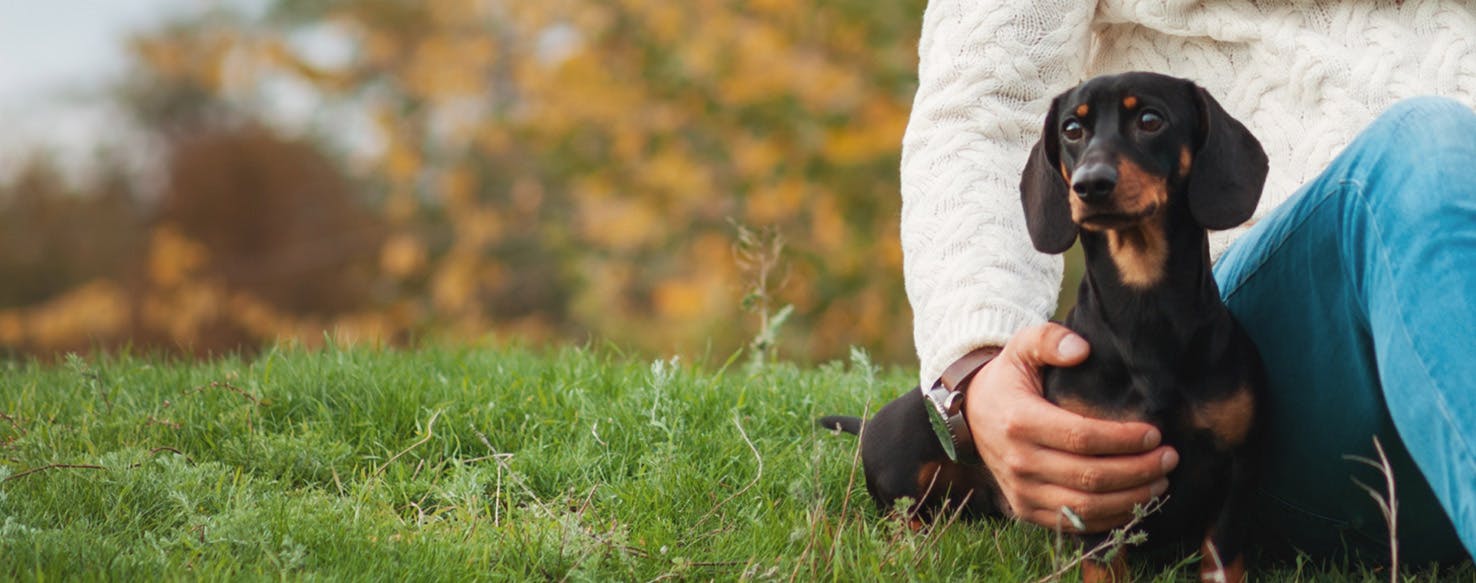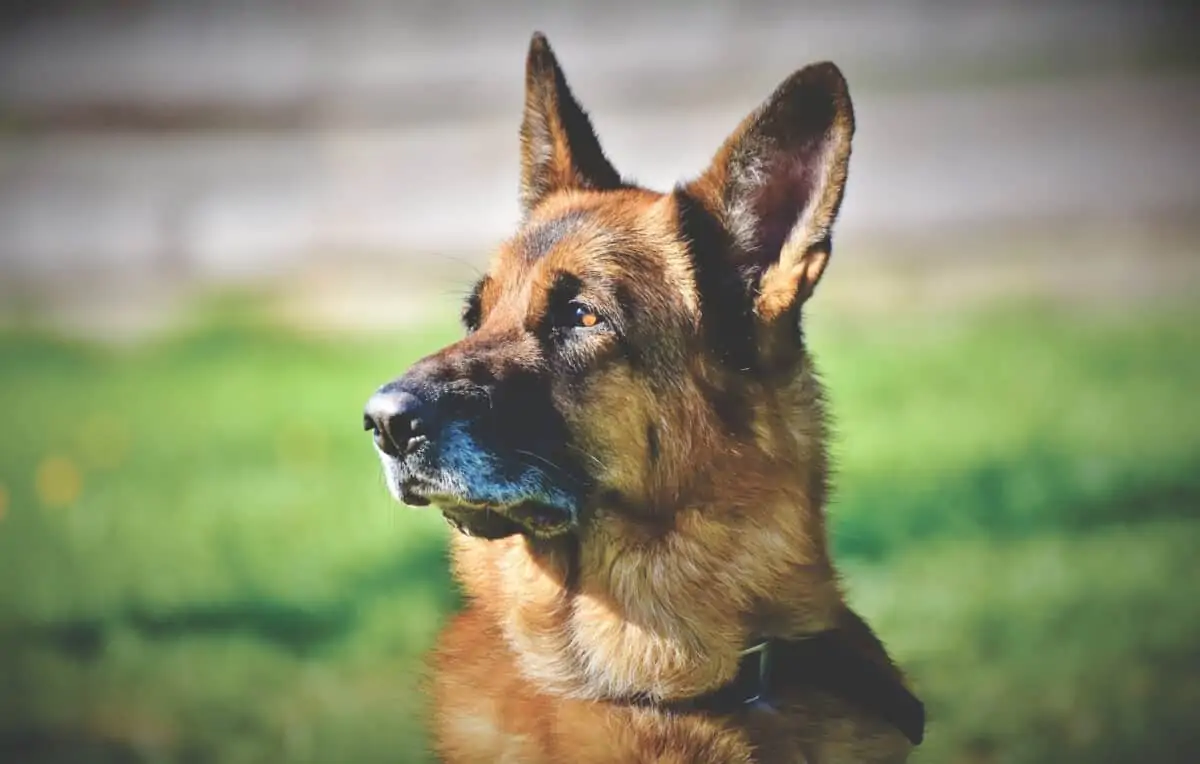
Do dogs have the power to sense bad people? It's a fascinating concept that has been studied and discussed widely.
Dogs have an amazing sense of smell, far beyond humans. Their noses contain millions of olfactory receptors, meaning they can detect scents that we can't. This can even help them tell when a person's emotions are changing.
But how do dogs decide if someone is bad? It's thought that they use a combination of things. They're very observant animals and can pick up on body language, facial expressions, and vocal tones. Plus, they can naturally read our emotions - they'll recognize fear and aggression.
There are lots of anecdotes of dogs protecting their owners from dangerous people. This suggests that dogs can possibly sense bad people, but it depends on the breed, training, and temperament of the dog.
Dogs can be a great help in assessing risks, but human judgement and common sense are also essential. The bond between human and dog is so special - they may sense bad people or just react to our feelings. Either way, the loyalty is undeniable.
Can dogs sense bad people?
To better understand if dogs can sense bad people, delve into the concept of this remarkable ability. Explore how dogs perceive and react to certain individuals, and the potential cues they pick up on. Gain insights into the intricate ways they gauge character and demeanor, shedding light on the fascinating world of canine intuition.

Explanation of the concept of dogs sensing bad people
Dogs have a special power to sense if a person is good or bad. This sixth sense isn't based on looks, but rather on the person's energy and body language. Dogs are highly attentive and can detect even minor signals that people often miss.
They can observe changes in a person's heart rate, sweat glands, and other physical reactions that show fear or aggression. It's widely believed that dogs use their strong sense of smell to collect details of someone's emotional state. Studies have shown that dogs can identify people with a history of violence or criminal activity. They also protect their owners and may become aggressive towards those who present a risk. This talent makes dogs a great help in law enforcement and search-and-rescue missions.
Humans have trusted dogs for centuries due to their exceptional senses and natural intuition. This gives us extra security. When it comes to spotting bad people, dogs never fail.
What's more, dogs can distinguish between various threats. For example, they can interpret if someone might be physically aggressive or if there are more subtle risks, such as people with bad intentions or dishonest plans.
A researcher from the University of California, Berkeley, published in Frontiers in Psychology, revealed that trained dogs can easily identify people with antisocial personality disorder by sniffing sweat samples taken from them. ASPD is connected to features like lack of empathy and regret, impulsivity, and manipulative behavior.
Factors that contribute to a dog's ability to sense bad people
To better understand what factors contribute to a dog's ability to sense bad people, delve into their sense of smell and how it helps them detect danger. Explore their observational skills and intuition, which play a crucial role in gauging someone's intentions.
Sense of smell and how it helps dogs detect danger
Dogs possess an amazing sense of smell due to their 220 million olfactory receptors. That's compared to our measly 5 million, so they can identify scents humans can't. Their noses are so powerful, they can even scent a teaspoon of sugar in two Olympic-sized swimming pools. This awesome sense of smell is critical for detecting bad people.
When faced with danger, dogs rely heavily on their noses. They can detect changes in body odor that could indicate fear or aggression. They've even been trained to recognize smells associated with illegal substances or hazardous materials. This makes them an invaluable asset in law enforcement and security duties.
Furthermore, dogs have the ability to detect changes in behavior or body language that suggest deceit or wrong-doing. They're incredibly observant and can pick up subtle cues from human actions and facial expressions. This heightened awareness helps them identify dangerous people and distinguish between someone who is safe and someone who is not.
Observational skills and intuition in dogs
Dogs have remarkable observational skills. They can pick up on body language, facial expressions, and gestures. Such senses help them recognize strange or suspicious behavior.
Their perception of human emotions is remarkable too. They can sense fear, stress, or aggression. They use their intuition to decide if a person is trustworthy or a threat.
Moreover, their sense of smell is exceptional. It helps them identify scents associated with fear or anxiety. It also allows them to recognize familiar scents and differentiate between friendly and hostile people.
How to interpret a dog's behavior when they sense a bad person

To interpret a dog's behavior when they sense a bad person, pay attention to their body language and behavior cues. If you're unsure about their reactions, it is advisable to seek professional help. Understanding these sub-sections will equip you with valuable insights into comprehending your dog's instincts and ensuring their safety.
Paying attention to a dog's body language and behavior cues
Reading a dog's body language and behavior clues can give us an idea of their opinion of people. They're smart enough to sense danger and figure out if someone is bad or not. Watching their nonverbal signs can help us make sense of their messages.
Posture is a big one to look for. If a dog stiffens up, crouches, or cowers, they might feel threatened. Also, if they show aggression with raised fur or bared teeth, it's likely they're feeling negative.
Facial expressions are another way they communicate. Wrinkled forehead or squinted eyes indicate distrust or unease. On the other hand, relaxed features can mean they like someone.
Tail position is another indicator. A wagging tail isn't always happy - it depends on its placement and speed. Low and tucked could mean fear.
Vocalizations are also important. Growling, barking, or whimpering could mean they're scared. If they stay quiet, however, it's likely they don't find the person dangerous.
Finally, we need to watch how they act around someone over time. We should be patient and let the dog become familiar before deciding if someone is "good" or "bad".
All in all, understanding a dog's body language and behavior is critical in figuring out what they think of someone. This helps us create a safe and secure environment for our canine friends.
How to improve a dog's ability to sense bad people
To improve a dog's ability to sense bad people, enhance their instincts and alertness through training exercises. Strengthen their senses by building trust and bonding with them.
Training exercises for enhancing a dog's instincts and alertness
Instincts can be improved with training! Teaching dogs to recognize scents associated with danger using scent boxes or trails. Obedience commands such as sit, stay, and come are essential and foster attentiveness. Socialize dogs in various environments, people, and situations to help them develop confidence. Stimulate mental activities with puzzle toys and hide-and-seek games. Mock scenarios of suspicious or invading behavior gives dogs firsthand experience.
Advanced training techniques can be explored, such as specialized scent-detection programs or agility courses. Research conducted by the Journal of Comparative Psychology revealed that certain breeds of dogs display a higher sensitivity in detecting deception. German Shepherds, Border Collies, and Golden Retrievers are great candidates for training exercises to detect bad people.
Building trust and bonding with a dog to strengthen their senses
Establishing trust and a bond with a pup is a must for bettering their capacity to sense danger. By forging a strong connection, canines become more aware of their owner's emotions and can detect potential perils more accurately.
Constructing trust involves positive reinforcement training. This involves rewarding great conduct and either ignoring or redirecting awful behavior. With constancy and patience, dogs learn to link positive experiences with their owners, creating a feeling of security and reliance.
Socialization is important for strengthening a dog's senses. Exposing them to various habitats, people, and animals from an early age helps them gain assurance and flexibility. On-going contact with different persons also teaches pups different behavioral cues and assists them in distinguishing between harmless people and potential threats.
Additionally, teaching pups basic obedience commands such as "sit," "stay," and "leave it" is another effective approach. These commands enable owners to quickly take control in uncertain circumstances. Dogs that react well to these commands are more likely to be heedful, enabling them to analyze the intentions of people around them.
Engaging in activities that stimulate the dog's senses can also improve their overall perception abilities. Interactive puzzles, scent detection games, or agility training help sharpen the pup's senses while providing mental stimulation. These activities not only build the bond between owner and dog but also better the dog's problem-solving skills and vigilance.

Moreover, keeping a tranquil environment in the home assists in forming a trusting relationship between dog and owner. Dogs are very responsive to their surroundings, so creating a peaceful atmosphere reduces anxiety levels and helps them recognize potential threats better.
By understanding how dogs comprehend body language, owners can communicate more effectively with their pets. Paying attention to subtle cues like ear positioning, tail wagging patterns, or changes in facial expression allows owners to comprehend their dog's point of view. This understanding causes trust since dogs feel comprehended and supported by their owners.
In conclusion, forming trust and bonding with a dog creates a groundwork for improving their capacity to sense bad people. Through positive reinforcement training, socialization, obedience commands, sensory stimulation, and attentive communication, dogs become more adept in recognizing potential threats, guaranteeing the safety of their owners.
Conclusion
Do dogs sense bad people? Yes! They have an amazing ability to pick up on tiny details that humans don't. They can identify changes in body language, voice, and pheromones. This lets them spot people with bad intentions.
Dogs also have a strong intuition. They can feel energies and vibes that we can't comprehend. They can tell apart kind and dangerous people. It's almost like they have a sixth sense for detecting bad people.
Studies show that dogs have a great understanding of human behavior. Research at Kyoto University in Japan found that dogs can recognize trustworthy and untrustworthy people just by looking at them. This demonstrates their incredible gift to judge character.
Dogs are also fiercely loyal. They will protect their owners if they sense danger. This instinct is built into their DNA, making them brilliant judges of character.
Famous animal behaviorist Stanley Coren confirms this. He says, "Dogs can indeed sense bad people through their remarkable senses and intuition." His research supports the idea that dogs have an uncanny ability to sense bad people and potentially dangerous individuals.
Frequently Asked Questions
FAQ: Can dogs sense bad people?
Q1: Can dogs really sense bad people?
A1: Yes, dogs have an incredible sense of smell and can pick up on subtle cues in a person's body language and behavior. They are capable of sensing when someone is acting suspicious or exhibiting aggressive tendencies.
Q2: How do dogs detect bad people?
A2: Dogs can detect bad people through their heightened sense of smell and ability to read body language cues. They can pick up on changes in a person's scent that may indicate fear, nervousness, or aggression.
Q3: Can dogs sense a person's intentions?
A3: While dogs cannot comprehend human intentions in the same way we do, they can pick up on subtle changes in a person's behavior and body language that may indicate their intentions. For example, they may sense if someone is trying to harm their owner or if someone is fearful.
Q4: Are certain dog breeds better at sensing bad people?
A4: Some dog breeds have been bred specifically for their ability to sense danger and protect their owners. Breeds like German Shepherds and Rottweilers are known for their keen instincts and strong protective nature.
Q5: Can a dog's judgment of someone be wrong?
A5: While dogs have a remarkable ability to sense danger, their judgment can occasionally be influenced by other factors such as past experiences or the owner's behavior. It's important to consider various factors and not solely rely on a dog's judgment of someone.
Q6: Should I trust my dog's instincts when it comes to people?
A6: While dogs have a remarkable ability to sense certain things, it's always wise to use your own judgment and take into account other factors when evaluating people. However, if your dog consistently displays signs of discomfort or aggression towards someone, it may be worth investigating further.




